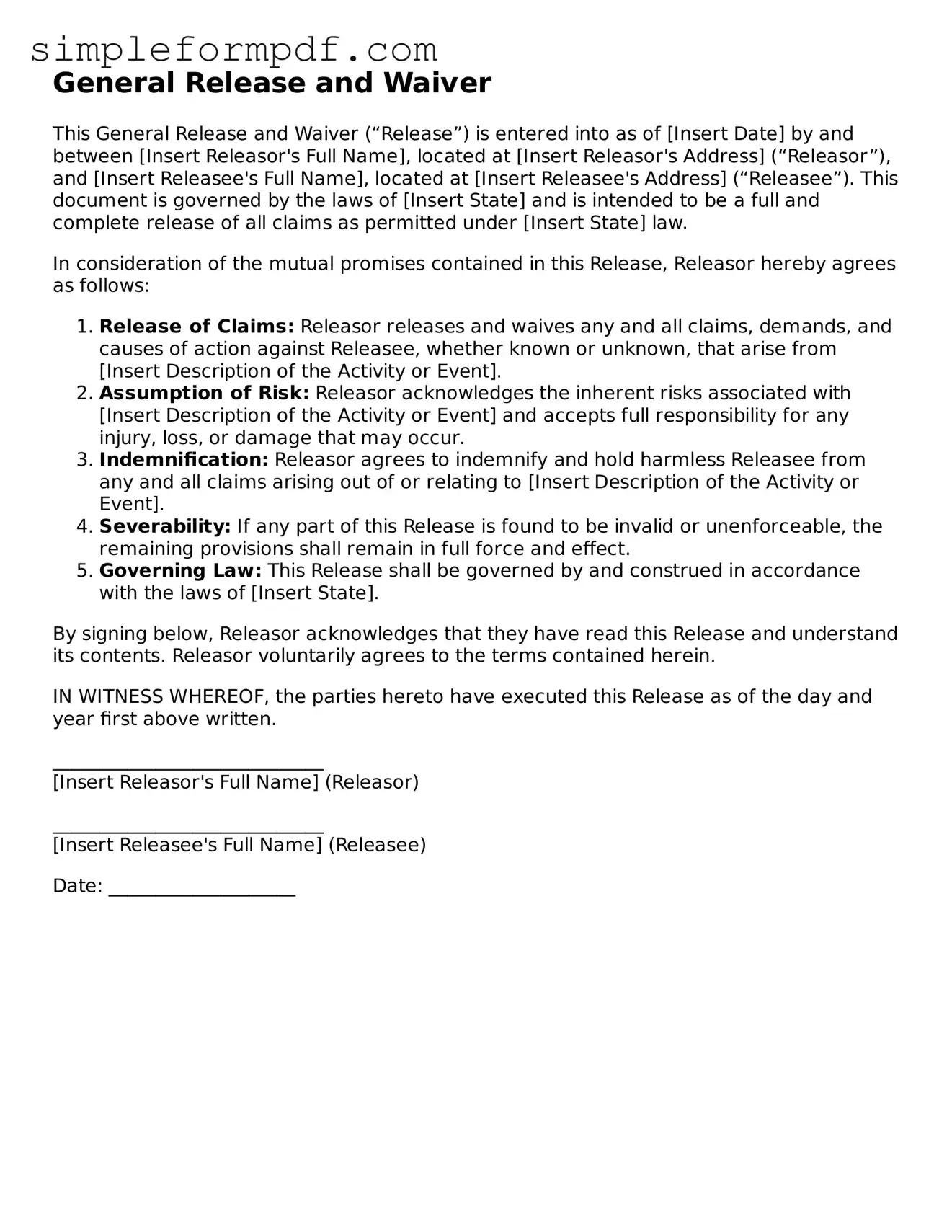General Release and Waiver
This General Release and Waiver (“Release”) is entered into as of [Insert Date] by and between [Insert Releasor's Full Name], located at [Insert Releasor's Address] (“Releasor”), and [Insert Releasee's Full Name], located at [Insert Releasee's Address] (“Releasee”). This document is governed by the laws of [Insert State] and is intended to be a full and complete release of all claims as permitted under [Insert State] law.
In consideration of the mutual promises contained in this Release, Releasor hereby agrees as follows:
- Release of Claims: Releasor releases and waives any and all claims, demands, and causes of action against Releasee, whether known or unknown, that arise from [Insert Description of the Activity or Event].
- Assumption of Risk: Releasor acknowledges the inherent risks associated with [Insert Description of the Activity or Event] and accepts full responsibility for any injury, loss, or damage that may occur.
- Indemnification: Releasor agrees to indemnify and hold harmless Releasee from any and all claims arising out of or relating to [Insert Description of the Activity or Event].
- Severability: If any part of this Release is found to be invalid or unenforceable, the remaining provisions shall remain in full force and effect.
- Governing Law: This Release shall be governed by and construed in accordance with the laws of [Insert State].
By signing below, Releasor acknowledges that they have read this Release and understand its contents. Releasor voluntarily agrees to the terms contained herein.
IN WITNESS WHEREOF, the parties hereto have executed this Release as of the day and year first above written.
_____________________________
[Insert Releasor's Full Name] (Releasor)
_____________________________
[Insert Releasee's Full Name] (Releasee)
Date: ____________________
